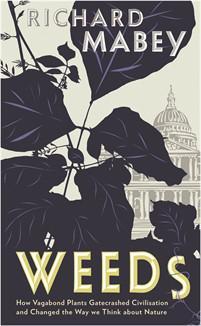 Why do we get so vexed by what we term weeds – going to huge lengths to eradicate them from our gardens? And why do we categorise some plants as weeds and some not?
Why do we get so vexed by what we term weeds – going to huge lengths to eradicate them from our gardens? And why do we categorise some plants as weeds and some not?
I have always suspected that it is because of man’s obsession to control everything it can; to impose its will on its surroundings and a presumption that man is a superior being that has a divine right to do what it will no matter of the consequences. We take on a piece of land, ‘tame’ it with digging and clearing, often using chemicals, and attempt to impose our order on it. We then proceed to use a lot of energy battling with weeds and ‘pests’. However, it is our industry and intervention which causes our problems in the first place. Enlightened gardeners know that gardening organically helps to build up and maintain an eco-system which results in a balance between beneficial insects and so called pests but there is still the issue of weeds.
However it is our, man’s, actions which encourage weeds to spread and proliferate. Weeds are opportunists and will colonize empty land wherever there is an opportunity. You only have to look at the way the bombed areas of London were colonised by weeds after the Blitz to see how this works. Richard Mabey in his book Weeds explores this further. He discusses how Agent Orange was used by the US as a defoliant in Vietnam so the Vietcong had nowhere to hide. Once the forest was destroyed it was colonised by cogon, a tough grass which flourishes when clearings appear and then recedes as the forest regrows. However because of the scale of the deforestation the cogon took control and has repelled any attempts to control it since. This is an extreme example of ‘weeds’ colonising empty ground and not a positive one.
But in many cases ‘weeds’ can be seen to be earth’s sticking plaster; colonising and healing empty spaces. In Detroit the empty lots left by the car industry are being populated by wild vegetation and this has promoted a new group of residents, young environmentally interested Americans, to move to and re-colonise the declining city. In the UK in an area outside Basildon, the Plotlands, which was abandoned 30 years ago, the lawn weeds flourished and the perennials in the gardens initially thrived but as time went on the native trees and other plants started to take hold and the land is now reverting back to native woodland. As Mabey says this shows that in ‘temperate Britain …, the occupation of disrupted land by weeds is rarely permanent or inexorable.” He goes on to argue that weeds’ role is to fill empty spaces, to repair the vegetation destroyed by natural occurrences such as landslides and forest fires but also the spaces caused by man’s intervention. Weeds stabilise the ground, “conserve water loss, provide shelterfor other plants and begin the process of succession to more complex and stable plant systems.”
So whilst we may curse the dandelions, couch grass and creeping thistle that invades our allotments and veg patches and bemoan the daises and clover in our lawns as Mabey says weeds are “the tithe we paid for breaking the earth.”
If you are interested in botany or plants generally I would really recommend Richard Mabey’s book – an excellent read which I was really pleased to receive as a Christmas present.

